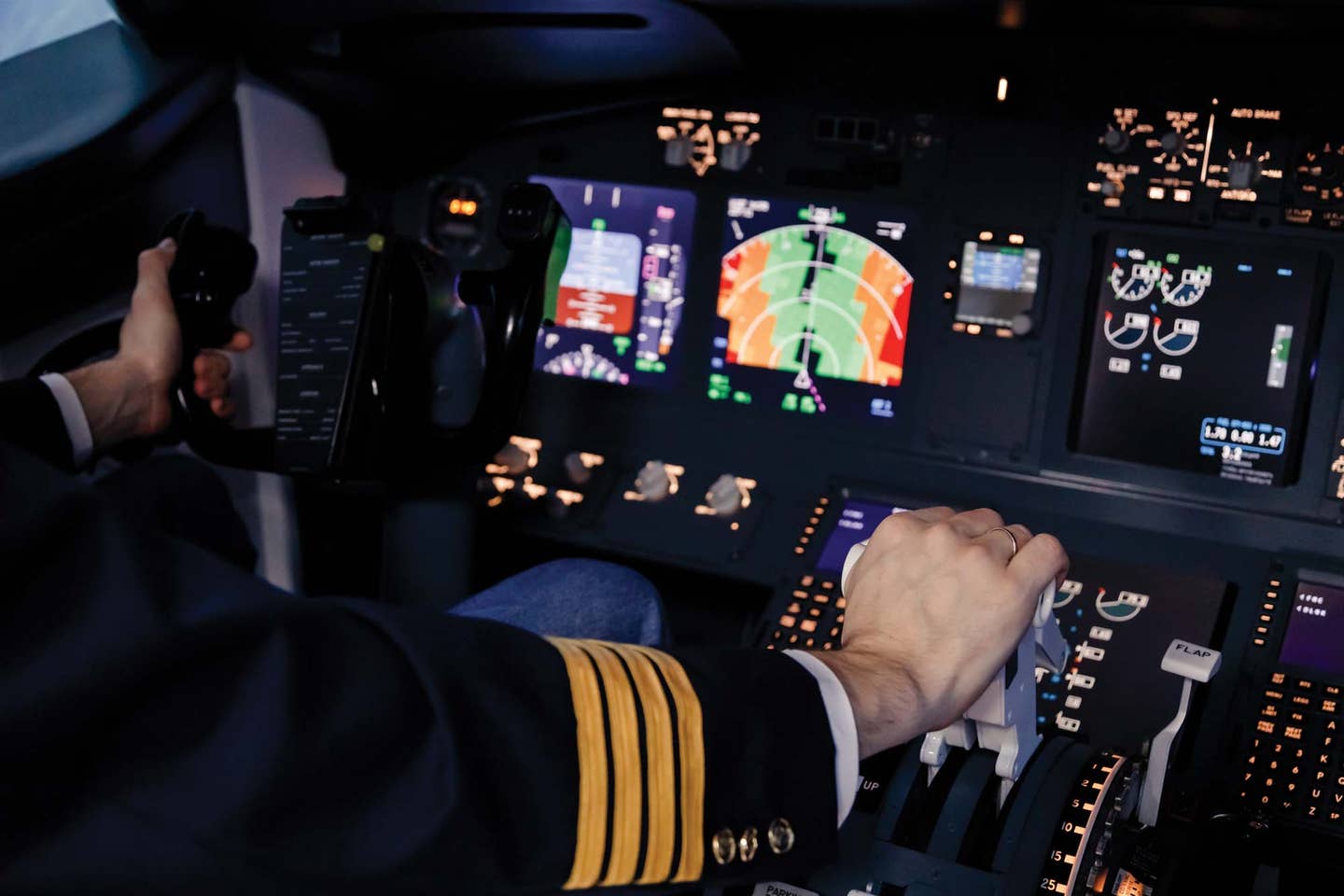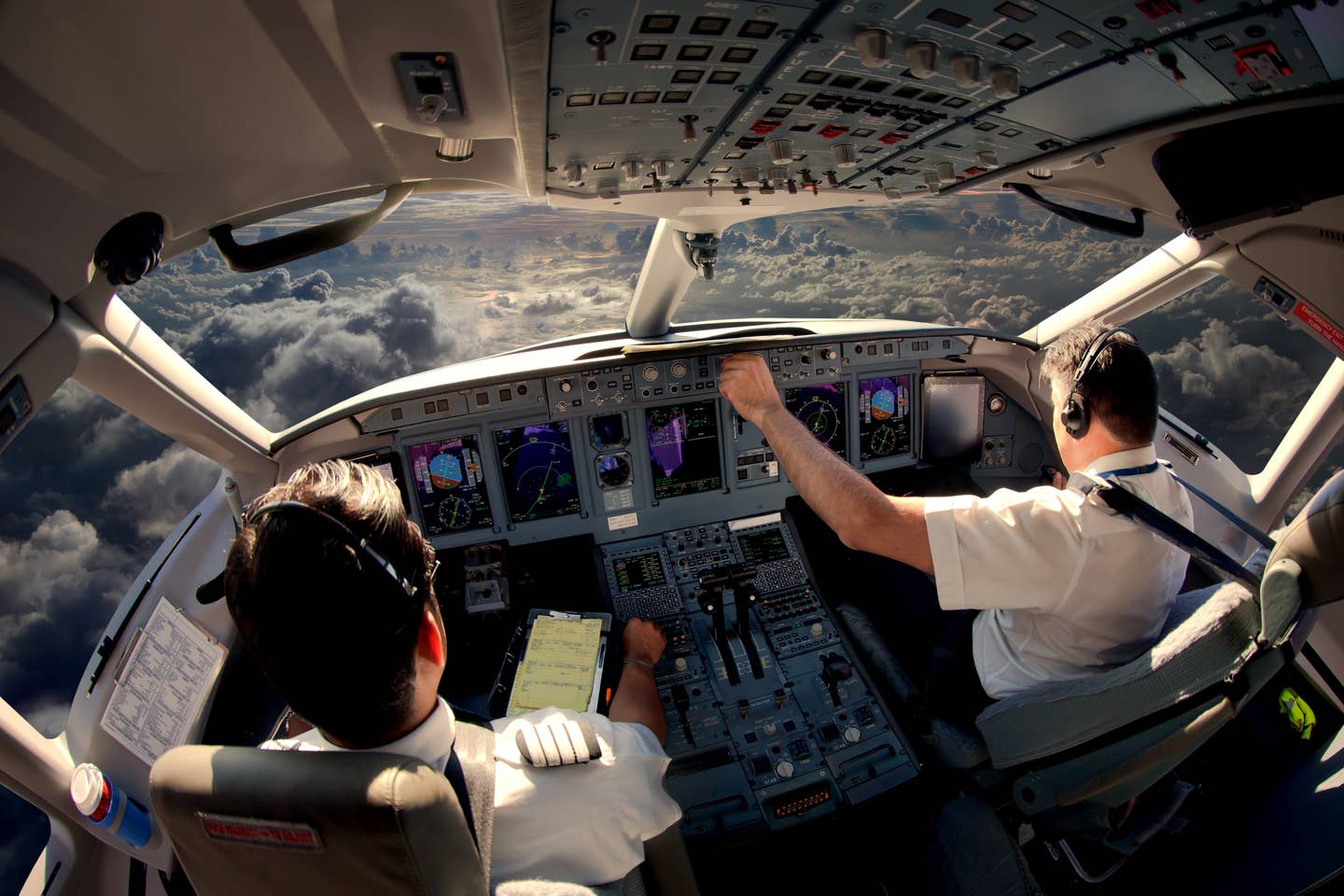Moving to the Left Seat
Being an airline captain really is a lot like serving as a general contractor, coordinating the efforts of the crew.

Image: Adobe Stock
In 2022, I jumped to one of the legacy airlines. Although it was far from my first preference, I wound up on the smallest jet we operate. I quickly realized that despite being the lowest-paying airframe at the airline, it had more than a few redeeming qualities: You can’t do red-eye flights in a short-haul airliner. Its short range also means that I generally only deal with two time zones. And being the junior airplane at the company meant most of the captains weren’t the demographic nearing retirement—and you can’t be a grumpy old man if you’re still young.
As a new-hire pilot, the company inflicts a two-year “seat lock,” basically ensuring it gets its money’s worth out of your initial training before you can bid for another position that requires training. There are exceptions to the rule, of course, and one of them allows you to upgrade to captain before the seat lock expires, but it adds another two years to it.
After what I jokingly refer to as momentary insanity, I put in for captain last summer. While at EAA AirVenture 2023, my phone blew up with notifications from the folks I know who read memos and emails in a timely fashion, so I don’t have to. There was a theme to the chaos of notifications: “Congratulations, captain,” they all read.
I’m the guy shackled to the Boeing 717 with a set of four-year handcuffs: This is your captain speaking. Sorry for having stepped away from the keyboard for a while. Things have been a bit busy.
Because I’m still pretty new to the company, I had to take the “long course” for the upgrade, and honestly, I would have opted for it anyway. The long course is the same full qualification training on the jet that new-hire pilots go through. I spent a month living at the hotel near the training center as my sim partner and I powered through a number of sessions in the procedures trainer before moving across the street to the full-motion simulators for maneuvers training.
I couldn’t have dreamed up a better training partner than Bret, who had flown the 717 at another airline decades ago. He took an early retirement because of the COVID-19 pandemic and, realizing he still had a few years left once the business picked up, decided to try on a different airline for his final years. He hadn’t flown the 717 in more than a decade, but it came back quickly. Being paired with a first officer who was basically just refreshing his acquaintance with the airplane was a godsend because it was my first upgrade to captain—ever.
After the prescribed number of maneuvers lessons, we sat down with an authorized program designee (APD), who examined our certificates and medicals, passports, and radio licenses. An APD is to airlines what a DPE is to general aviation—an instructor with authorization from the FAA to administer check rides. The difference in the airline world is that if you slide an envelope full of cash across the table before starting, it gets awkward really quickly. After a briefing, we headed down to the simulator for our maneuvers check ride.
Midway through the ride, sitting on Runway 1R at Washington Dulles International Airport (KIAD), storm clouds rolled in. The words of a prior instructor bounced inside my brain: “Here we are, ready to go. Four things can happen, and only one of them is a normal takeoff.” The others were an abort, a V1 cut, or wind shear.
The APD, in a moment of levity, cued up a song on his phone. As lightning flashed, Miranda Lambert and Carrie Underwood’s duet filled the simulator: “Got a real good feelin’ somethin’ bad about to happen.”
A week later, another APD slid his jumpseat away from the control panel where he’d dialed in a couple of plot twists over the course of a short round trip. “That was the most boring ride I’ve given in a while,” he said, us having just evacuated onto the taxiway after a cargo fire sprang up while on approach. “Great job, guys.”
The majority of the schoolhouse experience focused on flying the plane, which is great, but moving from first officer to captain means that aspect shifts from being the job to being a perk of the job. In 17 years of airline flying as a first officer, that notion had failed to register in my gray matter.
Basically, the captain and first officer share flying duties. They fly about the same amount on our fleet. You can dive into job descriptions and tell tales of those who go above and beyond, but the distilled truth is that the first officer’s responsibility is to fly the plane and assist the captain as needed.
The captain is like a general contractor of sorts, coordinating the efforts of the flight deck crew, flight attendants, ramp workers, dispatchers, and the rest of the company. And while almost all those teams are geared toward moving the flight out on time, the captain is the one who must be satisfied with all things before releasing the parking brake.
Or, as a great captain once told me, “When everyone else says, ‘Go,’ it’s the captain’s job to say ‘No.’”
The left seat bears a massive responsibility, but it also has its rewards. My pay nearly doubled, which I’m certainly not upset about. But also, as captain, I can set the tone for the trip. We all say to avoid politics, religion, and touchy social issues on the flight deck. It’s a great thought, but too many captains made too many assumptions that I was in their political camp before they set out on a trip-length tirade against all differing viewpoints. I got really good at staring out the window and developing subtle ways of redirecting conversations.
Even so, there was a lot of adapting to each captain I was paired with. As the sole audience member to a poorly researched series of political talk shows, I was running out of chameleon juice—fast.
But now, I get to fly with my favorite captain every single trip.

Subscribe to Our Newsletter
Get the latest Plane & Pilot Magazine stories delivered directly to your inbox


